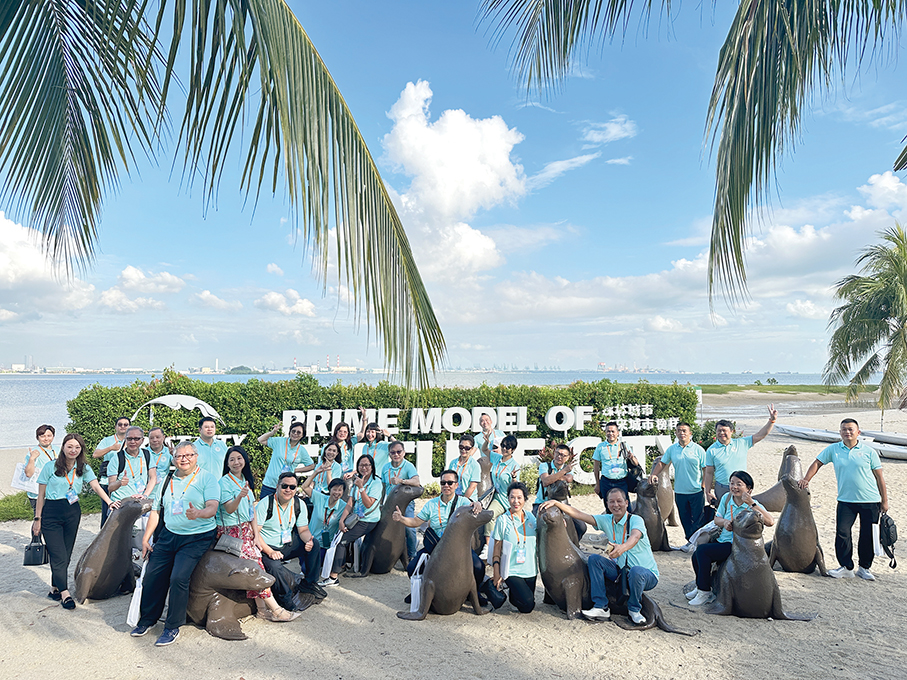Culture Affairs Bureau (IC) President Leong Wai Man said yesterday that the bureau has drafted a plan to “revitalise” Rua da Felicidade by converting it into a pedestrian area, aiming to enrich the atmosphere of cultural tourism and economic vitality into the area consisting of over 70 traditional Lingnan style buildings by exploring, developing and integrating the cultural resources of its surrounding streets, in conjunction with the core tourist areas nearby such as Avenida de Almeida Ribeiro (known as San Ma Lou in Cantonese), Largo do Senado and Largo de St.° Agostinho that have a relatively dense flow of tourists and residents at all times.
Rua da Felicidade (“福隆新街”), also known as the “Street of Happiness”, was famous for the commercial activities of prostitution and drugs until they were banned in the 1940s, according to Wikipedia.
After “preliminarily” discussing and getting an insight into the intention and possibility of the plan’s implementation with the neighbourhood mutual assistance association covering Rua da Felicidade and its surrounding roads, as well as the Transport Bureau (DSAT), Municipal Affairs Bureau (IAM) and the Public Security Police (PSP) Traffic Department, the Culture Affairs Bureau has initially decided to demarcate Rua da Felicidade, Travessa do Mastro, Travessa do Aterro Novo, Rua do Matapau and Travessa de Hó Lo Quai as the Ho pedestrian area, according to Leong, who pointed out that the pedestrian area would be available from morning to evening.
Rua da Felicidade – an old street on the Macau peninsula – is located in the central area of the city, surrounded by “rich, concentrated and distinctive” cultural resources, which are suitable for “revitalisation and utilisation”, Leong said, adding that once the plan is implemented, more artistic performances, art installations or cultural activities may be arranged in the area and, thereby, increasing people flow and optimising the business environment there.
Leong said that the plan was well received by the area’s business operators and residents, underlining that her bureau will take into account the views of various “stakeholders” in the hope that the impact on the residents and business operators in the area will be minimised, while maximising the benefits of the revitalisation.
The pedestrian area plan, which will be launched after the details are settled, was expected to be implemented on a long-term basis, according to Leong.
Leong said that the buildings on Rua da Felicidade are private properties, with many of them being “underutilised” and, therefore, she hoped that through the government-led pedestrian area plan, traders will be encouraged to take the initiative to make good use of the business space while, at the same time, more property owners will also take the initiative to communicate with the bureau about repairing their building’s facade.
Leong noted that the government has so far assisted in the restoration of only about 10 building facades in the area.
Leong underlined that the future pedestrian area on Rua da Felicidade will be different to the one in San Ma Lou which is the city’s thoroughfare with a large traffic flow.
A pilot scheme for a pedestrian area was carried out on San Ma Lou by the Cultural Affairs Bureau early this year.
Leong gave a brief introduction of the pedestrian area plan during a press conference after yesterday’s fourth plenary meeting of the government-appointed Cultural Development Advisory Committee this year, at the Macau Cultural Centre in Nape.
Meanwhile, according to Ieng Weng Fat, a member of the committee, all his fellow members endorsed the plan during the closed-door meeting, with some members suggesting the government set an “iconic” entrance and put a canopy over the pedestrian area.

Culture Affairs Bureau (IC) President Leong Wai Man poses during yesterday’s press conference after the fourth plenary meeting of the government-appointed Cultural Development Advisory Committee this year, at Macau Cultural Centre in Nape. – Photo: Yuki Lei






